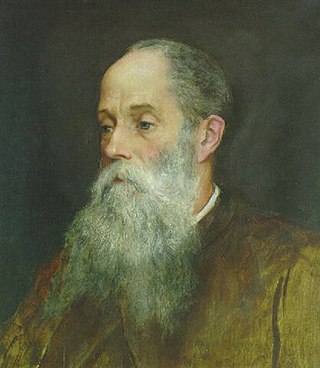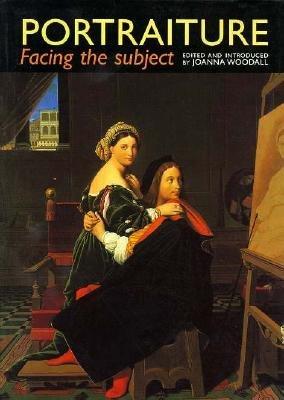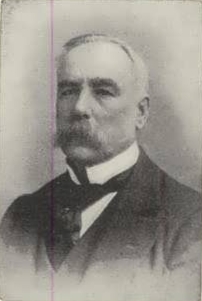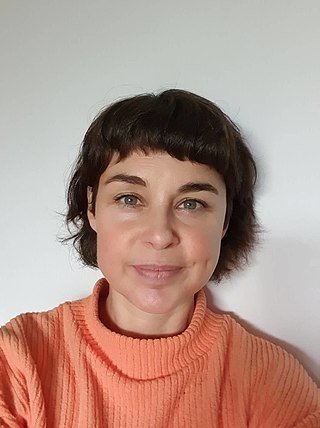Related Research Articles

The Pre-Raphaelite Brotherhood was a group of English painters, poets, and art critics, founded in 1848 by William Holman Hunt, John Everett Millais, Dante Gabriel Rossetti, William Michael Rossetti, James Collinson, Frederic George Stephens and Thomas Woolner who formed a seven-member "Brotherhood" partly modelled on the Nazarene movement. The Brotherhood was only ever a loose association and their principles were shared by other artists of the time, including Ford Madox Brown, Arthur Hughes and Marie Spartali Stillman. Later followers of the principles of the Brotherhood included Edward Burne-Jones, William Morris and John William Waterhouse.

Sir Edward Coley Burne-Jones, 1st Baronet, was an English painter and designer associated with the Pre-Raphaelite Brotherhood's style and subject matter.

William Powell Frith was an English painter specialising in genre subjects and panoramic narrative works of life in the Victorian era. He was elected to the Royal Academy in 1853, presenting The Sleeping Model as his Diploma work. He has been described as the "greatest British painter of the social scene since Hogarth".

Henry Holiday was an English Victorian painter of historical genre and landscapes, also a stained-glass designer, illustrator, and sculptor. He was influenced by the Pre-Raphaelite Brotherhood, many of whom he knew.

The Royal Birmingham Society of Artists (RBSA) is an art society, based in the Jewellery Quarter in Birmingham, England, where it owns and operates an art gallery, the RBSA Gallery, on Brook Street, just off St Paul's Square. It is both a registered charity, and a registered company.

Morris, Marshall, Faulkner & Co. (1861–1875) was a furnishings and decorative arts manufacturer and retailer founded by the artist and designer William Morris with friends from the Pre-Raphaelites. With its successor Morris & Co. (1875–1940) the firm's medieval-inspired aesthetic and respect for hand-craftsmanship and traditional textile arts had a profound influence on the decoration of churches and houses into the early 20th century.
Fiona Caroline MacCarthy, was a British biographer and cultural historian best known for her studies of 19th- and 20th-century art and design.

Benedict William Read FSA was an English art historian. Usually known as Ben Read, he was the author of numerous books, essays and articles on nineteenth and twentieth century art history, and was one of the most authoritative writers in the second half of the twentieth century on British Victorian sculpture.

John Roddam Spencer Stanhope was an English artist associated with Edward Burne-Jones and George Frederic Watts and often regarded as a second-wave pre-Raphaelite. His work is also studied within the context of Aestheticism and British Symbolism. As a painter, Stanhope worked in oil, watercolor, fresco, tempera, and mixed media. His subject matter was mythological, allegorical, biblical, and contemporary. Stanhope was born in Cawthorne, near Barnsley, Yorkshire, England, and died in Florence, Italy. He was the uncle and teacher of the painter Evelyn De Morgan and encouraged then unknown local artist Abel Hold to exhibit at the Royal Academy, which he did 16 times.
Peter John Nahum is an English art dealer, author, lecturer, and journalist best known for his frequent appearances on the BBC television program Antiques Roadshow, in which he was present from 1981 to 2002. He discovered a Richard Dadd watercolor on the show which was subsequently sold to the British Museum.
Giles Arthington Worsley was an English architectural historian, author, editor, journalist and critic, specialising in British country houses. He was the second son of Sir Marcus Worsley, 5th Baronet, of Hovingham Hall, a nephew of Katharine, Duchess of Kent, and died of cancer aged 44.

Georgiana, Lady Burne-Jones was a British painter and engraver, and the second oldest of the MacDonald sisters. She was married to the Late Pre-Raphaelite artist Edward Burne-Jones, and was also the mother of painter Philip Burne-Jones, aunt of novelist Rudyard Kipling and Prime Minister Stanley Baldwin, confidante and friend of George Eliot, William Morris, and John Ruskin. She was a Trustee of the South London Gallery and was elected to the parish Council of Rottingdean, near Brighton in Sussex.

Gaetano Giuseppe Faostino Meo was an Italian-British artist's model, landscape painter, and a noted craftsman in mosaic and stained glass. His unpublished autobiography is a useful source for art historians of the Aesthetic Movement and Edwardian Era.
Mark Louis Hallett is a Welsh art historian specialising in the history of Welsh art. He is the Märit Rausing Director of the Courtauld Institute of Art.

Joanna Woodall is an art historian at the Courtauld Institute of Art, London, where she is a specialist in portraiture and Netherlandish art.

Henry Jamyn Brooks (1839–1925) was a British painter, particularly known for his pictures of meetings and events, in which many individuals are personally identifiable. He painted royalty, and portraits of civic leaders and military people, and was also a photographer.
Esmé Whittaker is a British art historian and curator of art collections at English Heritage.
Peter Cannon-Brookes is a British art historian, with a special interest in Czech sculpture, and a curator who founded the journal Museum Management and Curatorship.

Cassie Newland is a British archaeologist, public historian and academic. She is Associate Professor in Cultural Heritage and Director of the Cultural Heritage Institute at the Royal Agricultural University (RAU) in Swindon. She was previously Senior Lecturer in Heritage and Public History at Bath Spa University and Research Associate at King's College London. She regularly appears on historical and science broadcast media as a resident expert, including Time Team, Time Crashers, and Coast.
Evelyn Ann Silber is an English art historian and an acknowledged specialist on 20th century British sculpture. She is an honorary Professorial Research Fellow at the University of Glasgow and is researching the marketing of modernist art in early 20th century London and the role played by dealers. Having moved to Glasgow in 2001 to assume the role of Director of the Hunterian Museum and Art Gallery, Silber continues to be based there and is an advocate for Glasgow’s cultural heritage, the conservation of the city, and its tourist industry. She is currently the Chair of the Scottish Archaeological Finds Allocation Panel.
References
- ↑ Professor Caroline Arscott, Head of Research. The Courtauld Institute, 2013. Retrieved 21 April 2013. Archived here.
- 1 2 3 "Caroline Arscott". The Courtauld Institute of Art's Research Portal. Retrieved 17 July 2020.
- 1 2 "Burke Lectures – Current Series". Department of Art History, Indiana University. Archived from the original on 9 November 2015. Retrieved 13 October 2015.